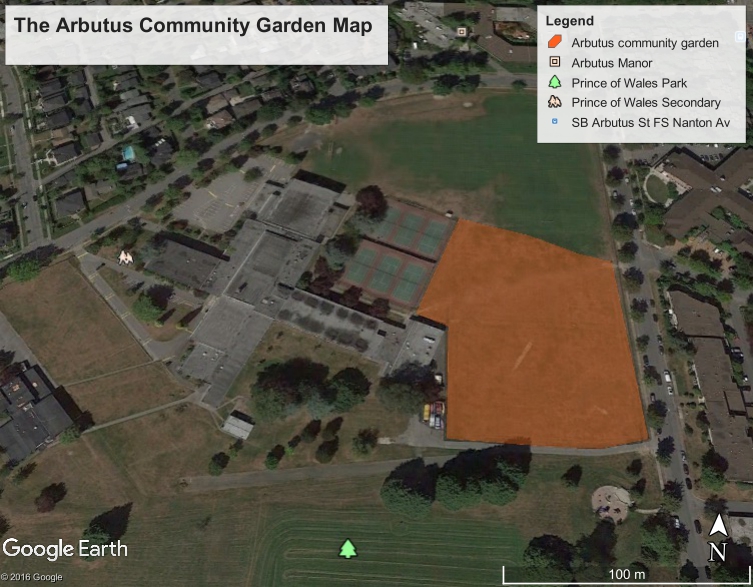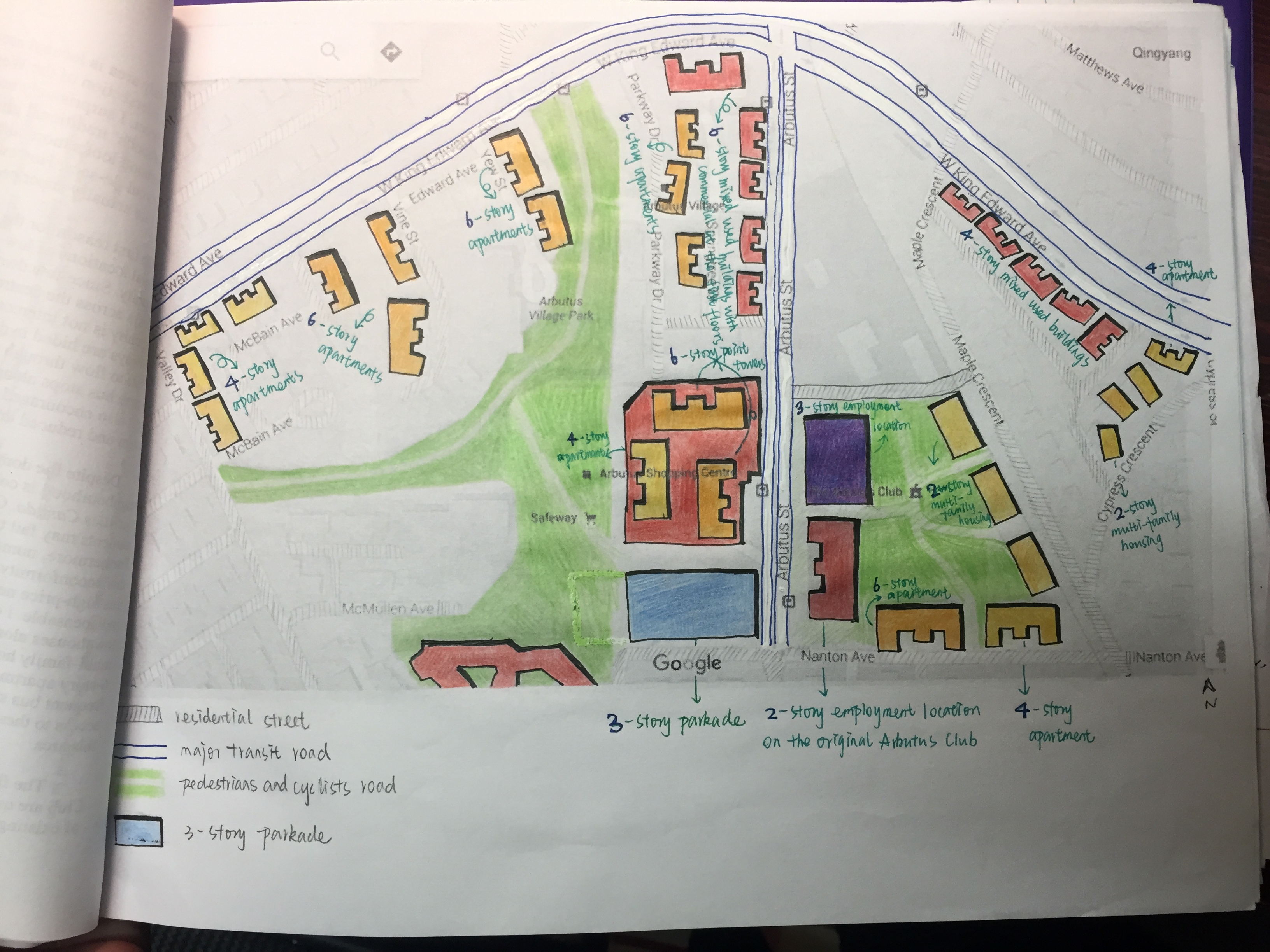- Noise level
The average noise level of my group’s data is 66.4db, which is much higher than the approved threshold of 55db of average day noise according to the UBC noise bylaw. The range of my noise data is from 59db to 77db, which indicates even the lowest noise level we measured surpasses the standard of the UBC bylaw. I think it would be considered a violation of students, staff, and residents’ daily life, considering the negative effects noise would do to human health.The dominant sources of noise in my group’s zone are pedestrian’s conversations, student-initiated activities (entertainment), traffics and building ventilation noise. I find in general, the evening noise level is lower than that of the day. I remember the highest value of noise 77db in my group’s region was measured near a student club advertising activity in front of the Bookstore; we categorized this event as “entertainment” and the similar noise issue does not show up in this category of the evening data, which indicates the different on-going activities on campus in different time-period.
In respect of traffic, we find that there are far less traffic activities in the evening: the data of transportation noise is scattered along major roads; on the other hand, that of the day is concentrated along some pedestrian streets that only open in emergency or to maintenance automobiles, which may signify the campus staff’s working time. Similarly, fewer pedestrians are on campus in the evening while more pedestrians make higher decibels of noise at daytime. Buildings’ noise at night is generally lower than that of the day but is still perceptible for the recording. I find the reason might be although the ventilation for most labs are shut down at night, many building functions are still in play all day long.
- Dominant sources of noise
According to my observation of the loudest noise, I believe it might be beneficial if student organizations are aware of the UBC noise bylaw, which indicates the threshold of the average value of 55db during the Daytime and 45db at night, in respect of Continuous Sound and the Sound Level. Furthermore, considering the large number of data with perception of building noise day and night, it would also be useful if buildings are constructed and renovated with concerns of noise mitigation intelligent design, such as vegetation planting around certain ventilation area, etc.
- Key areas of noise conflicts
a. Near the Rashpal Dhillon Track & Field Oval
Main source of noise: traffic, construction, sports, pedestrian
Conflict: Since I find most of the noise can be traced back to the “sports” category, I suppose these sports activities are sports events and daily training of general folks, athletes, and audience. Since most of these events happen at day according to the noise map, the noise pollution would not be a huge problem for the nearby neighbourhoods. But considering some sports events or other activities may hold at night, the nearby residents, especially the ones across the Wesbrook Mall may be bothered by the high-level noise.
b. Residence near the TRIUMF House and the Phi Delta Theta Fraternity House
Main source of noise: traffic, construction, pedestrian
Conflict: The highest level of noise of this region are concentrated along the Wesbrook Mall and Thunderbird Blvd. Considering the noise in the evening is still higher than 60db along the Wesbrook Mall, I think the residents along the mall would be affected by the shutting automobiles. In addition, the noise may be traced back to fraternity residents “yelling pass the neighbourhood” according to the news. But this cannot be confirmed since the data is not detailed enough for me to distinguish between traffic noise and pedestrian ones.
c. Near the fountain
Main source of noise: pedestrian, landscape, traffic, building
Conflict: Most of the noise in this region comes from high volume pedestrians due to the intersection of Main Mall and University Blvd, which both function as major pedestrian routes on campus. Many students may wander around the fountain having conversations with friends and buying food from food trucks. In respect of the proximity of adjacent faculty buildings such as Neville Scarfe building, students’ noise may interfere lectures and research.
- News headlines
Noise makes it often to headlines on our campus, whether the sources of noise are `fraternity students’ (here, here, here, and here), `buildings and maintenance’ (here and here), or even `children’ (here and here). However, I find both the noise of children and fraternity students is not a problem at the time of my measurements. Since my group measured during the day time, scenes like drunk fraternity residents yelling and walking through the community would not happen. On the other hand, in the evening, according to the noise map, although the general noise level around the Fraternity House is higher than that of the normal neighbourhood, I cannot ascribe the noise to fraternity residents due to the on-going traffic, which makes loud noise, on the Wesbrook Mall.
Meanwhile, according to the tags marked by the whole class, I find noise created by children is not concentrated near the Iona Green Playground and the Norma Rose Point School, which most children should make continuous noise according to the news. Children’s noise, according to the noise map, is relatively scattered day and night and not significant when compared to other noise sources such as traffic and pedestrian.
All in all, I find most of the noise is associated with construction, building, traffic, and pedestrians, in which only buildings and constructions accord the complaints reported by the newspaper.
- Drawbacks and limitations of crowd-sourcing data
A potential drawback of this crowd-sourcing data can be traced back to the device we use—smartphones. I find the microphones of phones easily disturbed by the wind, even mild breeze; although the assignment guideline clearly demonstrated “avoid days with strong wind and rains”, the recently frequent rainy and windy events in Vancouver enhance the possibility that students accidently record the wind instead of the noise level. This potential problem may be reflected on the data map. Higher decibels of noise are distributed along the main corridors, which are also urban canyons: airflow between tall buildings lining aside the streets are accelerated.
Furthermore, I notice some of the measurement points did not sufficiently cover the whole region but along a certain street (eg. Osoyoos Crescent near the Fraternity House), which cannot represent the region’s overall noise level; some points are too close for meaningful documentation; some points are outside the study region. The data collected by the whole class shows some blank area with insufficient data of noise level. Therefore, considering the different standards adopted and questionable qualities of this data, more rigid measurements are in need if the UBC noise data is seriously used for future analysis and policy-making.



